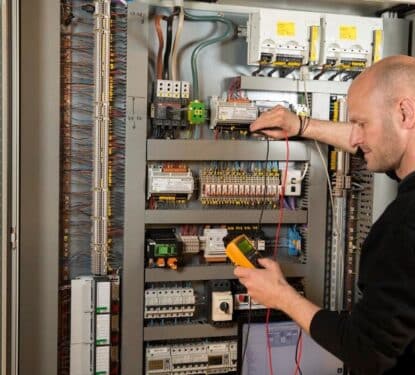Office construction is on the rise. Since 2010, a boom has been underway around the world — with activity set to peak in 2020 at close to 19 million square meters globally, similar to levels at the height of the last two cycles in 2001 and 2008. The current economic upswing impacts the commercial real estate sector at the same time as a fundamental shift in the way modern buildings are designed and marketed. A shift away from simple energy-efficient and secure buildings that dominated the last decades to a new generation of buildings that also place great focus on its occupants.
“A major trend reshaping the smart buildings market is the increased focus on occupant-centric workplaces, which has developed over the past few years. Organizations are looking for new ways to attract and retain the best people and empower them to be productive. Shifts in the landscape of work are driving a greater focus on occupant experiences and interactions with buildings,” states our latest report: Occupancy Analytics & In-Building Location Based Services.
Our report identifies this increased focus on occupant-centric workplaces as a key driver for smart office building adoption. Pushing the market alongside construction growth, a maturing IoT, flexible working trends, and the development of workspace-as-a-service. While occupant-centric workplaces have long promised to bring new value to the market, we have only recently started to see trends that signal a tipping point for occupant-centricity to become a key value-add for the coming years.
“When we talk about smart buildings, and the innovation coming out of these environments, occupancy data and analytics is an important spoke in that wheel. For any business, the competitive advantage comes in its people, so when technology is harnessed, and real estate is purposed to engage and empower employees, everyone wins,” we explained, in a recent eBook about the real-world applications and benefits of occupancy data analytics.
As the evidence supporting the benefits of occupant-centric applications grows more tangible, more and more businesses have begun to demand occupancy-analytics systems in their offices. It is not plain sailing for the technology yet, however, security and privacy concerns continue to act as the barriers to market growth. Furthermore, market confusion over the variety of solutions available, a risk aversion to new investments, and implementation costs, also hold the market back according to our report, which explores each in depth to understand how the market will evolve with, through, or around such barriers.
“As the technology steadily matures, many of the barriers to widespread deployment of smart building technologies are being eroded over time. Successful market deployments by pioneers in a wide variety of scenarios demonstrate use cases for all building types and help build confidence amongst decision-makers in the capabilities of smart building technologies,” the comprehensive report states.

The rollout of occupancy analytics solutions has raised concerns about the way data concerning an individual’s movements will be stored and used. The introduction of GDPR put Europe on the forefront of employee privacy protection, now California’s Consumer Privacy Act (CCPA), which aligns with GDPR principles, will lead the US into an age of greater control for individuals over their personal information.
Occupant health and wellness is another area promising a lot but has so far been held back by a lack of tangible evidence needed to seal investment and drive a solid business case. We are now seeing this barrier eroded by the maturing of early deployments with positive results. Established green building certification schemes such as BREEAM and LEED have begun to cover aspects of health and wellbeing within their assessments. Other third party-validated assessments gaining traction in the market, including WELL, Fitwel, and the Leesman+ certification.
“There is developing a body of empirical evidence from the scientific community which demonstrates that various environmental factors in our buildings have a direct impact on our performance,” explains our report. “Although the wellness movement is still fairly immature, it is gaining momentum, and helping to drive demand for smart building systems to both measure and evaluate the impact of environmental conditions on building occupants, and to establish measurable return on investment for companies.”
One by one the barriers that have been holding back occupancy data analytics are being eroded. As we enter a new decade, occupant-centric drivers are forcing their way through to pour new value into the smart building space. Our new report estimates that the Occupancy Analytics market in Commercial Office space achieved systems sales of $2.17 Billion in 2019, rising to $5.73 Billion by 2024, growing at a CAGR of 21.5%. Suggesting that we are on the verge of a new generation of buildings that aim to harness the endless potential of the humans that occupy them.



